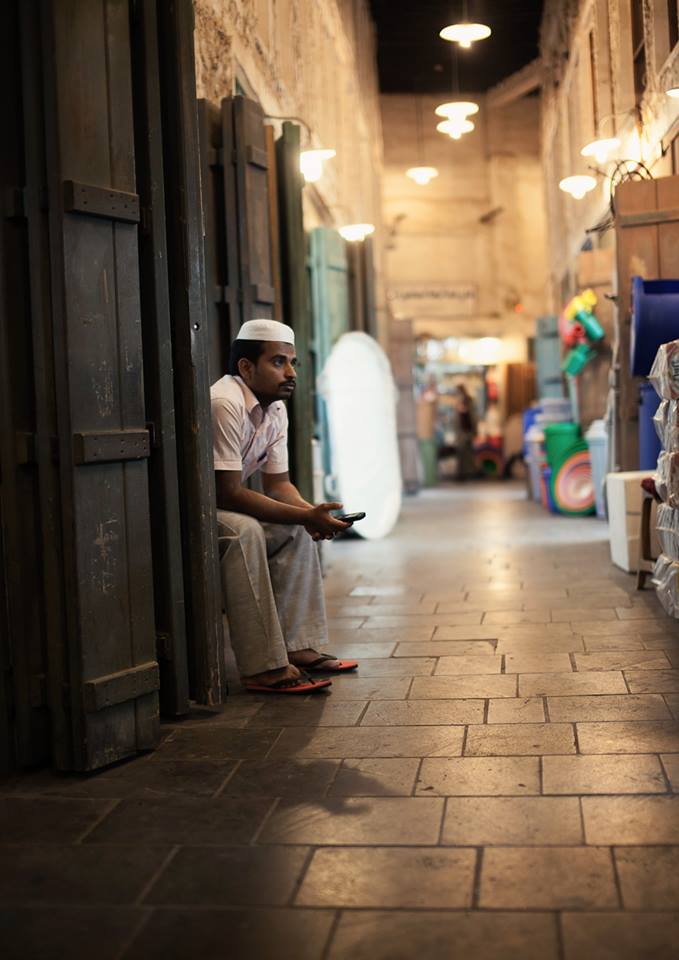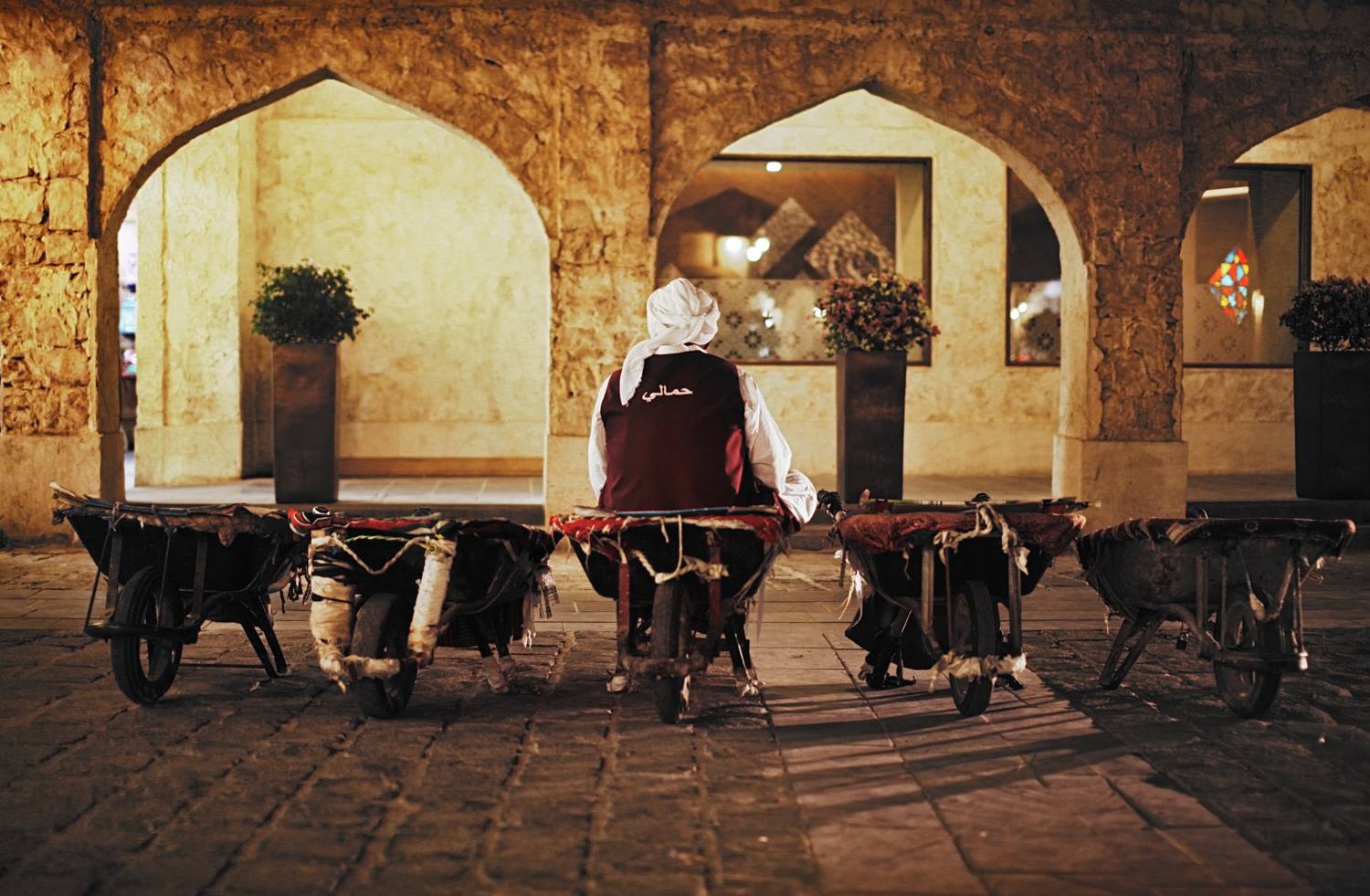Doha-based photographer Mohammed Ismail offers a glimpse into the everyday lives of migrant workers, images that sometimes challenge and sometimes reinforce our perception of Qatar's labour issues. Below we interview Ismail about his work and motivations.
Migrant-Rights.org: Can you tell us a bit about yourself?
Mohammed Ismail: My passion for photography started during my first year at university when I purchased a compact flash camera and set about practicing the art of composition and using only natural light to shape my images.
This passion grew to such an extent that I decided to save up what little money I had as a student and splashed out on my very first DSLR – the Canon 450D. My new camera introduced me to the world of; aperture, shutter speed and ISO, which only further fueled my desire to become a better photographer.
The start of 2011 saw the beginning of the civil war in Libya – an event which would change several aspects of my life. Libya’s very first independent satellite channel opened up in Doha, Qatar and was looking for volunteers. I dropped what I was doing in London (a boring office job) and flew out to Qatar to help set up what would later become the leading source for news for many Libyans during the civil war.
Whilst working at the channel, I travelled to the south of Tunisia where I met Libyan refugees and later snuck into Libya to document the fighters and destruction caused by the war. I could with my camera.
I have since documented the local culture in Qatar as part of my 365 project. Currently, I am a volunteer at Katara’s Art Centre and Doha News, whilst also undertaking my latest project, ‘Faces of Qatar’.
MR: What drew you to take these photos?
M.I.: I am fascinated by human behaviour and so street photography is my way of capturing that behaviour in a single shot. This is also a side of Doha very few people know about or care to know about. Too many people will just walk past without really thinking about the workers, so what I like to do is to watch people and to think about how they have a life of their own, with their own trials and tribulations and moments of sadness and of joy.
In order not to disturb this behaviour, I like to sit back and observe them until I find the right moment to press the shutter.
MR: Your photos are quite different from typical portraits of migrants workers - were you purposefully seeking to take photos of expat workers?
M.I.: It was never my intention from the get go to hunt down workers in Doha and I am certain I would not have done so back home in England. That said, I quickly came to realise the workers here are the ones whom built, fixed and changed Doha. Their contribution to Doha's growth and development can never be overstated. I think it is only fair to document this.
Do you ever speak to the subjects in your photos, for instance about their work?
M.I.: I have spoken to the workers on a couple of occasions. I generally like to ask about where they are from and strike up a short conversation. With a lot of these workers, they have very little interaction with the world, other than, “Do you sell this?” “Can you fix this?” Or “How much is this?” I feel it is therefore a welcome break when someone asks how they are with no ulterior motives.
Do you have a favourite photo?
M.I.: It is hard to pick a favourite photo, but one of my favourite photos is of the labourer resting in a wheelbarrow. I had previously tried to take pictures of these workers, but they waved their hands and asked me not to. I respected their wishes, but when I found myself behind the worker, I knew I would be able to capture the moment, without necessarily showing the gentleman's face. The fact no one else was in the shot, only illustrates that for the majority of the day, these people are very much alone.
See more of his work at www.mohammedismail.com and on his Facebook page.






![Image relating to [Stories of Origin] Indian fishermen: Between the devil and the deep sea](https://www.migrant-rights.org/wp-content/uploads/2018/12/Screen-Shot-2018-12-27-at-10.35.49-AM.png)